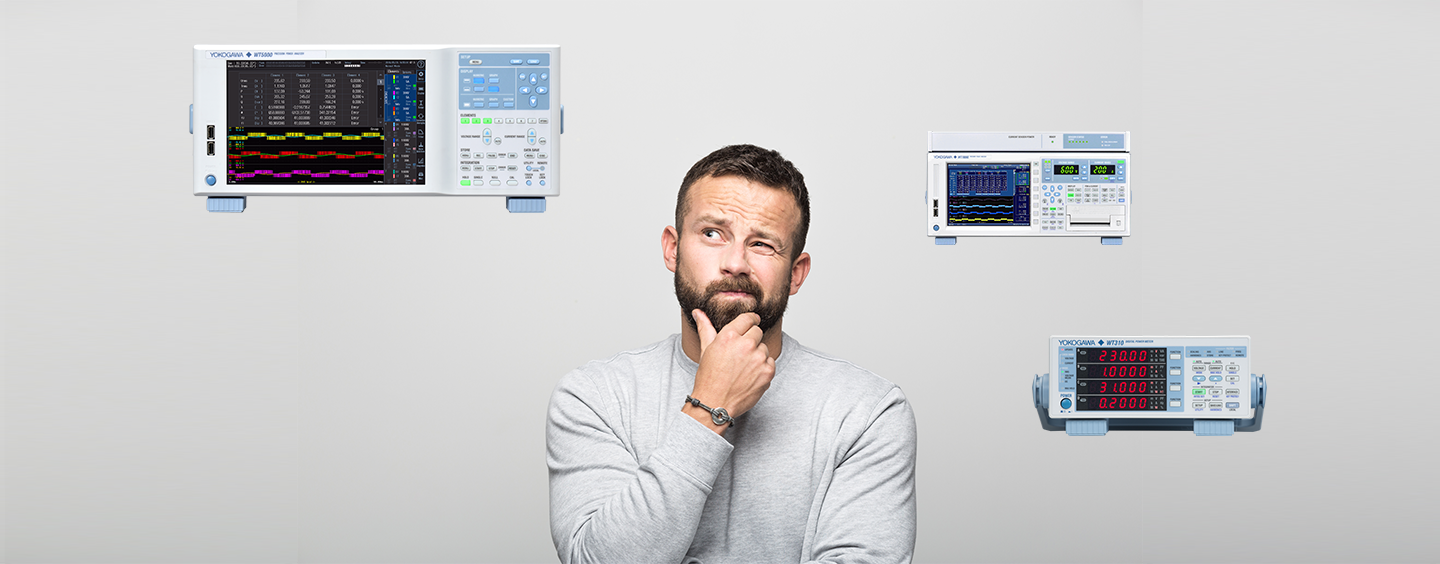With a global emphasis on sustainable energy production, energy efficiency is a hot topic. Getting an accurate measure of power use for equipment such as transformers, inverters and switching power supplies is therefore vital.
But which parameters affect this power measurement accuracy and what are the pitfalls when trying to achieve accurate energy-efficiency testing?
Take power analyzers. It pays to know what manufacturers are referring to when they quote figures for uncertainty and accuracy. Customers will want to know the power uncertainty of an instrument they are considering, but some manufacturers may quote the voltage uncertainty as the basic uncertainty, as this is usually better than the power uncertainty. There are also many other issues such as crest factor, phase angle error, temperature range, warm-up time, stability period and common mode rejection.
Also, be sure you understand what manufacturers mean when they quote specifications. You will often see terms such as “guaranteed” or “typical” values. Typical values are usually a reference value based on what a manufacturer expects from their product, but these values are not usually 100% guaranteed.
Measurement range
Measurement range is another important factor. The uncertainty of a power measurement varies depending on the measurement range, so the accuracy value should specify the range over which the specifications are valid. For example, the power accuracy of the Yokogawa WT5000 is valid from 1% to 130% of the measurement range. Without this information, it is not possible to apply the uncertainty specification to any measurement done with the instrument.
A peek at crest factor
To understand the measurement range error, we need to understand the effects of the crest factor – the ratio of the peak value to the effective RMS value of the waveform. For a power meter, crest factor shows the ability of the instrument to measure correctly. Measurement of the crest factor of the input voltage or current of an input signal also provides an indication of the quality of the input signal.
For example, the crest factors of Yokogawa power meters are usually given as three or six. This means that we can measure the input signal with a peak value three or six times larger than that of the selected input range value.
Also, be sure what measurement ranges the manufacturer is working to – some power meters use RMS measurement ranges and others use peak measurement ranges. Quoted accuracies based on peak values look impressive, but the reality is quite different.
For example, the accuracy value of 0.1% from the peak measurement range corresponds to 0.3% of the RMS measurement range at a crest factor of three for the voltage and current range. As power is voltage times current (3×3) a factor of 9 can be applied if specifying against the peak value.
The fact remains that the absolute uncertainty of the power reading remains the same. A correct comparison would calculate the absolute uncertainty of the common measurement points used rather than the relative specifications.
Yokogawa uses RMS values for both measurement range setting and tolerance calculation. This makes it easier to select on the measurement range, as the electrical equipment will always state the maximum RMS voltage that can be applied as well as the maximum current consumption.
To measure power accurately, power analyzers also need accurate period detection. For example, in the Yokogawa WT5000 power analyzers, this is done in software. The WT5000 also has a second measurement method (digital filter average) that does not require zero crossing detection.
Accounting for shifting currents
Current shunts cause a major challenge in current measurement, as they produce a small phase shift and therefore an additional time delay. As well as current shunts, amplifiers used before an A/D converter also introduce a phase shift.
This phase shift must be specified by the manufacturers of power analyzers. Yokogawa specifications consider all conditions that can lead to a phase angle error or measurement error and are included in the calculations.
Common-Mode Rejection Ratio (CMRR)
The common-mode rejection ratio (CMRR) is the rejection by the device of unwanted input signals common to both input leads of the voltage input. Here, the two input terminals are connected to each other – the problem occurs because leakage causes an interference voltage, leading to measurement errors. Yokogawa power analyzers have their CMRR specified and can be used while calculating the uncertainties.
Another factor affecting the accuracy of a power analyzer is temperature. Yokogawa uncertainty specifications are specified at 23°C ± 5°C, a range that can readily be achieved as these are normal room temperatures. Some manufacturers are not so stringent – they may indicate different temperature ranges of only 23°C ±2°C, a much lower figure which adds significant uncertainty when compared. Achieving this specification requires a large investment by the user in a temperature controlled measurement area, particularly vital where large machines or heavy equipment is to be tested.
Calibration is king
As we’ve seen, understanding the true accuracy of a power analyzer means understanding all the factors that influence it.
In addition, always have the unit calibrated at regular intervals. As well as ensuring the instrument is operating within specification, the calibration result can be used to determine the measurement uncertainty. The calibration history can also give an indication of the unit’s long term stability.
Calibration can be done at Yokogawa’s own European Calibration Laboratory, the world’s first non-governmental facility to receive full ISO 17025 Accreditation for power measurements at up to 100 kHz.
For more details on which power analyzer is best fitted to your needs, enter your specific conditions here and find your match.



No Comments so far
Jump into a conversationNo Comments Yet!
You can be the one to start a conversation.